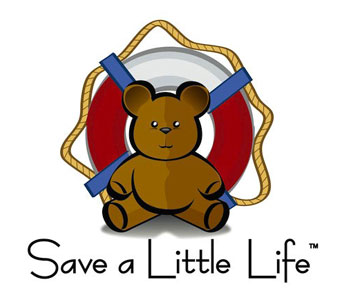COMPREHENSIVE CHANGES IN CPR GUIDELINES
During my 18 years as a CPR instructor I have seen new guidelines come and go. They appear about every 5-6 years and are often accompanied by declarations of “new and improved.” For the thousands of parents I have worked with over the years, new and improved is only meaningful if it translates into “Can I remember what to do if my baby isn’t breathing?“
Well, it’s that time again. The newest CPR guidelines have just been released and we’re very excited to share them with you.
WHAT’S NEW?
Pediatric CPR has essentially remained the same with an emphasis on immediate CPR for lifeless victims. The age-range for pediatric victims is now birth until puberty. This helps to clarify the typical differences between pediatric and adult CPR, usually based on the underlying causes. It is safe to say that most pediatric emergencies are of a respiratory (breathing) nature-requiring the rescuer to provide the same 30 chest compressions and 2 rescue breaths. The chest compression depth is essentially the same (1/3 the depth of the infant/toddler/child’s chest wall). The 2 breaths that follow should be just enough to see/feel the victim’s chest wall rise. The pumping speed has been slightly altered to be somewhere between 100-120 pushes per minute, again, followed by two rescue breaths. CPR must continue until the victim starts to breath and/or move on their own, indicating the likely return of the victim’s own pulse.
Scientists who have studied these techniques now have a consensus on what works best when dealing with a dying person. Over the last decade considerable evidence now exists suggesting that good quality chest compressions will make the biggest difference in extreme emergencies requiring CPR. These changes were summarized by the American Heart Association in a recently released document. The highlights of that document are listed below. Please keep in mind that providing CPR to a victim is, in itself, not that difficult a task. It is also clear that one does not have to perform CPR perfectly in order to make a difference. Yet we do know that the worst thing you can do, if someone really needs you, is nothing. This may be the most important take-home message of all.
CPR Guidelines for Pediatric CPR
• Initiation of CPR, starting with chest compressions, rather than rescue breathing, is recommended and will lead to shorter delays.
• The emphasis should always be on quality chest compressions first, then check for breathing and provide rescue breaths. • Depth of chest compressions for pediatric victims should be about 1/3 of the depth of the victim’s chest wall.
• Chest compressions are to be done in the middle of the breast bone at nipple height.
• Compression (pumping speed) should be at least 100 -120 per minute.
• After 30 chest compressions, administer 2 “rescue breaths” and then repeat with 30 chest compressions. Continue with this ratio of “30:2” – compressions to breaths until help arrives or the victim has a spontaneous return of breathing.
• Breaths provided should be just enough to get a normal rise in the victim’s chest wall.
• If spontaneous breathing or moving returns during CPR, stop immediately and observe the victim until help arrives. • CPR for drowning victims is the same as described above.
• If a cell phone is immediately available it may be used IMMEDIATELY to call 9-1-1. If not available, begin CPR for up to 2 minutes (5 CPR cycles) before calling 9-1-1.
Most emergency health experts agree that during pediatric emergencies the CPR that is provided at the scene BEFORE PARAMEDICS ARRIVE gives the victim the best chance of survival. Thus, it is imperative that all parents, close family members or anyone else with primary care responsibilities for infants and/or children be trained and re-trained in current CPR skills.
The newest guidelines for adult CPR now include a similar approach. However, several things should be mentioned:
• Adult CPR may be provided with chest compressions only.
• If alone with an adult who collapses, CALL 9-1-1 first, then resume compressions until paramedics arrive.
• If an automatic defibrillator is nearby, have someone grab it and use it as directed prior to the arrival of paramedics.
Richard Pass, RN,BS, Director, Save A Little Life, inc.
Check our Events calendar
for upcoming CPR classes
or call
(818) 344-1442
PRIVATE CLASSES ARE ALSO AVAILABLE



